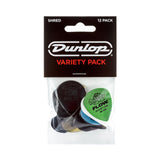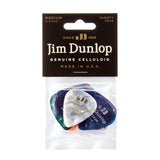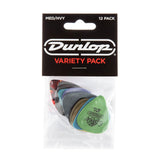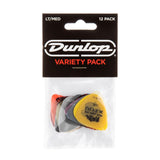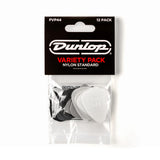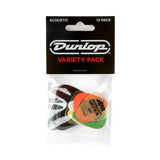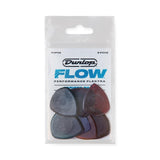There are various pros and cons of both the Tune-o-Matic and Wraparound bridge designs you’ll often see adorning LP and SG-style guitars. But what are the differences between the two? Why do some guitarists swear by an older and arguably less efficient design? In this article we’re going to detail the ins and outs of these two types of brilliant bridges to find the answer…
Wraparound Bridges
The Wraparound bridge was introduced by Gibson in 1953 and was designed to replace the Trapeze bridge that was considered by many to be an inefficient design. Featuring a slightly contoured bar to match the radius of the neck, the Wraparound bridge has ‘U’ shaped slots at either end that mount steel bolts threaded into the body of the guitar itself. As one of the earliest guitar bridge designs, simplicity is its forte, which is probably why they’re still around today - more on which later.
Tune-o-Matic Bridges
The Tune-o-Matic was created as a direct replacement to the Wraparound bridge, first appearing on the Gibson Super 400 guitar in 1953 before appearing on the Les Paul Custom the year following. Keeping some of the qualities of the original Wraparound, the idea behind its construction was to make the distance adjustable for all strings with individual saddles, whilst simultaneously creating a better break angle for the strings with the addition of the stop bar tailpiece. The Tune-o-Matic now comes as standard on the vast majority of Gibson guitars and derivative designs have found their way onto many other major guitar brands, testament to its simple yet effective design.
Tune-o-Matic vs Stop Bar
Now that we understand a little about the history of these two great bridges, let’s have a look at the pros and cons of each in terms of performance.
Wraparound Bridges - The Pros & Cons
Wraparound bridges are much loved for their simple, easy to use design, as well as their increased sustain over other bridge designs. This is because there are only two points at which the bridge is anchored to the body, resulting in minimal loss of string vibration. For some guitarists the feel of a Wraparound bridge is unmatched when it comes to the attack of the guitar's sound. It’s also very easy to change strings on a Wraparound thanks to its simple design requiring a simple thread through, and wrap-around of the strings. It's for this reason Gibson used the Wraparound bridge on a lot of it's beginner and entry level guitars, like the LP Jr and some SG's.
However one of the major issues with the Wraparound design is the lack of flexibility when it comes to intonation. You can only adjust from each bridge post, which means that getting an exacting intonation for each string is not possible. You will certainly be able to get close to perfection with this kind of bridge, but you may have to make some compromises at either end of the fretboard to get there. There are also some modern models of Wraparound bridge with individual saddles, although some purists may feel this goes against the whole point of having one!
Tune-o-Matic Bridges - The Pros & Cons
The Tune-o-Matic offers several advantages over the Wraparound with its more complex design. A Tune-o-Matic allows for very precise intonation of each string individually, getting you much closer to perfect tuning all across the fretboard. Thanks to the increased string break angle provided by the stop tailpiece, you also get fantastic overall tuning stability and the brilliant sustain the LP guitars are renowned for. The inclusion of the Stop Tail part of the bridge is what gives the Tune-o-Matic a distinct advantage over the Wraparound.

Unfortunately whilst you have great flexibility over intonation adjustments with a Tune-o-Matic bridge, in terms of action it has very similar limitations to that of a Wraparound bridge. You can’t individually adjust string height with a Tune-o-Matic, but instead have to set the height at either string post, meaning a much lesser flexibility if you want to specifically set your guitar action. For the majority of players this likely won't be an issue, but for those of more exacting standards, you could potentially hit some roadblocks here.
The Best Wraparound and Tune-o-Matic Bridges
Now that we have the pros and cons of each type of bridge, lets have a look at some of the best options available for you to fit to your LP-style guitar. There are many more bridge variations that haven't made this list and you can view the whole range here.
Wilkinson GTB Wraparound
Wilkinson have a great reputation for high quality, innovative hardware and that’s exactly the case with the Wilkinson GTB Wraparound bridge. Featuring a rock solid design with no loose parts, you get a maximum sustain with plenty of energy transfer to the body of the guitar. It has an adjustable G and B string block, allowing you intonate these two particularly pesky strings separately from the overall bridge for extra functionality.
Check it out here.
Northwest Guitars Wraparound Bridge
One of our own products, the Wraparound Combination bridge features all the no nonsense benefits of the Wraparound bridge design, without its one major flaw. Independently adjustable saddles ensure you get a perfectly in tune guitar all across the neck, whilst you still get that great sustain and note separation that’s sought after by Wraparound bridge aficionados the world over.
Get your hands on one here.
Tonepros AVR2G Tune-o-Matic

The Tonepros AVR2G features a unique saddle design that sets it apart from other bridges in this category. Utilising a proprietary formula these saddles are based on the original vintage Nylon 66 material found in vintage guitars from the late 50s and early 60s. This unique material prevents string breakage whilst still providing excellent durability, resulting in a minimum of saddle wear without ever compromising on tone.
Check out all our Tonepros Bridges.
Gotoh Nashville Tune-o-Matic
The Gotoh Nashville Tune-o-Matic features titanium saddles that are individually adjustable, ensuring each string rings true whilst notes up and down the fretboard are pitch perfect. Made in Japan, this high quality guitar bridge includes imperial M8 threaded mounting studs for fitting to Epiphone guitars and the slightly wider design offers a larger adjustment area for the saddles, increasing flexibility in setup.
Check it out here.
In Conclusion
So there you have the main differences between Tune-o-Matic and Wraparound bridges, as well as some choice picks if you’re looking at replacing yours. Whilst no guitar bridge is without its negatives, the two presented here are certainly great examples of guitar bridge design, having been mainstays since the 50s! With the combination of modern build techniques and vintage design ethos, there are plenty of options that offer the best of both worlds for you, meaning that there are no real bad choices here.
Learn More
For a deeper dive on guitar bridge design, check out our Guitar Bridge Guide.
The mighty Gotoh Telecaster Bridge offers a significant performance upgrade on your stock Tele bridge.
To learn more about how your guitar bridge works, you'll need to know about Guitar Scale Length.


















